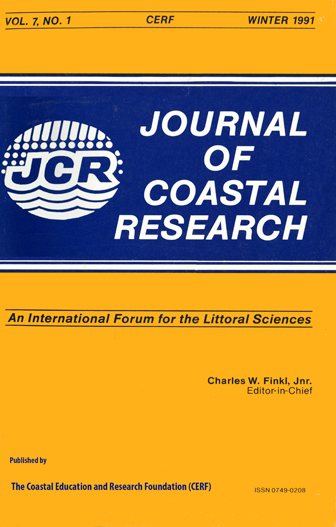Paleoshorelines, Reefs, and a Rising Sea: South Florida, U.S.A.
Keywords:
Florida Keys (USA), Florida reef tract (USA), bedrock topography, paleoshorelines, sea-level rise, Quaternary coral reefs, coral reef distribution, coral growth, storm surge, climatic change, future shorelinesAbstract
The porous limestone bedrock, thin sediment cover, and tectonic stability of the Florida Platform during the past 15 ka BP provide an exceptionally suitable setting for reconstruction of paleoshorelines and onshore projection of future shorelines in a rising-sea scenario. Paleoshorelines for 8, 6, 4 and 2 ka BP show that (1) a series of limestone islands formed, then drowned, along the outer platform; (2) a distinct trough, called Hawk Channel, separated the outer islands from shore; (3) the lower Keys flooded earlier and more rapidly than the rest of the Keys; and (4) Florida Bay and tidal passes through the middle Keys into the bay developed within the past 4 ka BP. During the Quaternary, topographic highs were preferential sites for coral growth. Bathed by clear oceanic waters, reefs near the platform flourished. As sea level rose, reefs developed on the platform margin and were gradually displaced to more shoreward bedrock highs. Upon platform flooding, water quality deteriorated and reef luxuriance diminished. Projection of future shorelines onto land shows that most land forming the Florida Keys would flood in a rise of 1 to 2 m and that a rise of little more than 5 m would submerge all land. Offshore reefs would die, while nearshore reefs would shift landward as the mainland shoreline migrated northward. Onshore topographic highs would become numerous small islands as the Keys flooded, until all drowned. The submerged highs would then become preferred sites for coral growth, until water quality and depth exceeded the optimum for survival.


